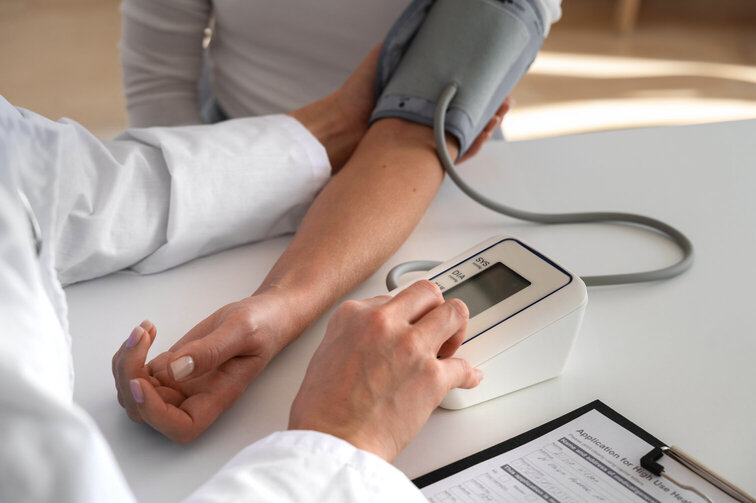Table of Contents
ToggleHow to cure high blood pressure instantly: with 25 FAQ

There are some immediate steps that can help temporarily lower blood pressure:
Deep Breathing or Relaxation Techniques: Taking deep breaths, practicing meditation, or engaging in other relaxation techniques can help lower stress levels and, in turn, reduce blood pressure temporarily.
Hydration: Drinking a glass of water can have a slight effect on blood pressure, especially if dehydration is a contributing factor.
Physical Activity: Light physical activity or exercise can cause a temporary drop in blood pressure. However, vigorous exercise might cause a temporary rise before it lowers.
Reducing Sodium Intake: Consuming less sodium (salt) in your diet can help reduce blood pressure. Avoiding processed foods and fast foods that are typically high in sodium can have an immediate impact.
Limiting Caffeine and Alcohol: These substances can temporarily raise blood pressure in some individuals. Limiting their intake might help in the short term.
It’s important to note that while these steps might provide short-term relief, they are not a substitute for long-term management. To effectively manage high blood pressure, it’s crucial to make sustainable lifestyle changes such as maintaining a healthy diet, regular exercise, reducing stress, and taking prescribed medications as directed by a healthcare professional. Here is a 7 day plan of healthy diet for weight loss and muscle gain. Always consult a doctor for a proper diagnosis and a comprehensive plan to manage high blood pressure.
FAQ about Hight Blood Pressure

How can I get my blood pressure down right now?
To lower blood pressure immediately, try relaxing through deep breathing exercises, staying hydrated, engaging in light physical activity, reducing sodium intake, and avoiding caffeine or alcohol. These tactics may offer a temporary reduction, but for sustained control, adopt long-term lifestyle changes: maintain a balanced diet, exercise regularly, manage stress, and follow prescribed medications. Always consult a doctor for personalized guidance on reducing blood pressure.
What is the first aid for high blood pressure at home?
At home, initial first aid for high blood pressure involves calming the individual and ensuring a comfortable, seated position. Encourage slow, deep breaths and relaxation techniques. Additionally, taking water to stay hydrated and avoiding stressful situations can help temporarily lower blood pressure. These methods serve as immediate measures but don’t substitute long-term management. Always seek professional medical advice for persistent high blood pressure.
(American Heart Association – Understanding Blood Pressure Readings)
Can you rid yourself of high blood pressure?
High blood pressure can be managed and controlled effectively, but it’s typically not completely curable. Lifestyle changes, including a balanced diet, regular exercise, maintaining a healthy weight, limiting alcohol, managing stress, and avoiding tobacco, play a key role. Medication might be necessary in some cases to regulate blood pressure. The American Heart Association stresses that while it can be managed, high blood pressure is often a chronic condition that requires ongoing attention to maintain healthy levels.
How quickly can I reduce my BP?
Lowering blood pressure can vary in speed. Immediate techniques like deep breathing, hydration, and light exercise may offer temporary reductions. However, sustained changes in lifestyle, such as a healthy diet and regular exercise, typically take weeks to months for significant, lasting effects. Medications might act within hours to days, but the overall reduction is gradual. Consult a healthcare professional for personalized guidance and potential medication interventions.
Does lemon lower blood pressure?
There’s limited scientific evidence specifically proving that lemons directly lower blood pressure. However, lemons are a good source of vitamin C and antioxidants, which may contribute to heart health. Their high potassium content might indirectly support blood pressure regulation. A 2014 study in Nutrition Journal noted a connection between vitamin C and reduced blood pressure. Yet, more research is needed to conclude that lemons alone distinctly lower blood pressure. Always consult a healthcare professional for comprehensive advice on managing blood pressure.
How can I lower my BP in 5 minutes?
To rapidly lower blood pressure in 5 minutes, try deep breathing exercises, such as the 4-7-8 method, which involves breathing in for 4 seconds, holding for 7 seconds, and exhaling for 8 seconds. Relaxation techniques, hydration, and light physical activity like walking might also help temporarily reduce blood pressure. These methods aim to relax the body and promote immediate stress reduction, potentially causing a brief decline in blood pressure.
Which food reduce blood pressure?
Foods that can help lower blood pressure include leafy green vegetables (such as spinach and kale), berries, beets, oatmeal, fatty fish rich in omega-3s (like salmon), seeds (flaxseeds, chia seeds), nuts, and olive oil. These foods are part of a balanced diet that emphasizes fruits, vegetables, whole grains, lean proteins, and healthy fats, known as the Dietary Approaches to Stop Hypertension (DASH) diet. This diet has been shown to effectively lower blood pressure.
Can garlic lower BP?
Yes, garlic may help modestly reduce blood pressure. Allicin, a compound in garlic, exhibits potential blood pressure-lowering effects by relaxing blood vessels.
Studies like one from the Journal of Integrated Blood Pressure Control (2014) and others suggest that garlic supplements could offer a slight decrease in blood pressure. However, its impact may vary among individuals and should not replace prescribed medication. Consult a healthcare professional before using garlic supplements for blood pressure management.
Which fruit is good for BP low?
Bananas are excellent for lowing blood pressure. They’re rich in potassium, which helps regulate blood pressure. Potassium lessens the effects of sodium, aiding in relaxing blood vessel walls and lowering pressure.
Do bananas lower blood pressure?
Yes, bananas may help lower blood pressure due to their high potassium content. Potassium helps regulate blood pressure by counteracting the effects of sodium. The fruit’s nutrients aid in maintaining a healthy heart and managing blood pressure levels. Consuming potassium-rich foods, like bananas, as part of a balanced diet may contribute to better blood pressure regulation.
What lowers BP fastest?
Immediate blood pressure reduction can be achieved by relaxation techniques, deep breathing exercises, staying hydrated, engaging in light physical activity, and limiting sodium intake. However, sustainable long-term management involves a healthy lifestyle, including a balanced diet, regular exercise, stress reduction, and medication as prescribed by a healthcare professional. For immediate relief, relaxation techniques and light activity can help lower blood pressure faster.
How fast does garlic reduce BP?
Garlic’s impact on blood pressure can vary. Some studies suggest garlic may modestly reduce blood pressure within hours to weeks due to its active compounds. However, individual responses differ. It’s not a quick-fix solution, and long-term use combined with a healthy lifestyle is recommended for better efficacy in managing blood pressure.
Can I eat rice if I have high blood pressure?
Yes, you can eat rice if you have high blood pressure. Choose brown or whole grain rice for more nutrients. Eat it in small portions and check for added salt. It’s okay to include rice as part of a healthy diet for managing high blood pressure.
Is Tea good for high blood pressure?
Some teas like green or hibiscus tea might help lower high blood pressure because they have good stuff in them. But some teas with lots of caffeine can make blood pressure go up for a short time. It’s best to ask a doctor before drinking lots of tea if you have high blood pressure.
Is Coffee good for high blood pressure?
No, Coffee can transiently elevate blood pressure due to its caffeine content. However, for some individuals, moderate coffee consumption might not significantly impact long-term blood pressure. Always consider personal tolerance and consult a healthcare professional. Excessive caffeine intake can affect hypertension. Moderation and monitoring are vital in managing its effects on blood pressure.
Is Potato good for high blood pressure?
Potatoes can be part of a blood pressure-friendly diet due to their potassium content, which may help regulate blood pressure. However, preparation and serving methods matter. Boiled or baked potatoes with skin are healthier options. Avoid high-fat, high-sodium preparations like fried potatoes or potato chips, which can adversely affect blood pressure. Always consume them in moderation within a balanced diet for optimal blood pressure management.
Is curd good for high blood pressure?
Yes, curd (yogurt) can be beneficial for high blood pressure. Its probiotics, calcium, and peptides may help lower blood pressure. However, choose low-fat or non-fat options to avoid excessive saturated fats, which can contribute to heart issues if consumed in high amounts.
What is the best drink for high blood pressure?
Water is the best drink for high blood pressure. Staying hydrated supports overall health and helps regulate blood pressure. Avoiding sugary beverages and excessive caffeine is advisable.
What is normal blood pressure by age?
For adults:
- Normal blood pressure: Typically, a blood pressure reading of 120/80 mm Hg is considered normal for most adults.
- Elevated blood pressure: Between 120-129 (systolic) and less than 80 (diastolic).
- Hypertension Stage 1: Ranges between 130-139 (systolic) or 80-89 (diastolic).
- Hypertension Stage 2: Ranges above 140 (systolic) or 90 or higher (diastolic).
However, for children and adolescents, normal blood pressure readings can differ. It’s essential to consult with a healthcare professional to understand what is normal and healthy for different age groups, as well as individual health circumstances. These are general guidelines, and blood pressure norms might slightly vary based on personal health conditions and other factors.
What are 7 foods good for blood pressure?
Avocados, bananas, leafy greens, berries, oats, salmon, and seeds like flaxseeds are beneficial for blood pressure. Their potassium, fiber, and omega-3 content contribute to lower levels.
Is cucumber good for high blood pressure?
Cucumber is beneficial for high blood pressure. Its low sodium and high potassium content may help lower blood pressure. With hydrating properties and nutrients, it supports a heart-healthy diet.
Is lemon water good for high blood pressure?
Lemon water may offer minor benefits due to its vitamin C content, aiding overall health.
Can we drink milk tea in high BP?
Drinking milk tea in high blood pressure should be moderate. The caffeine in tea can transiently increase blood pressure. However, research shows moderate tea consumption might have neutral effects.
Is drinking hot water good for high blood pressure?
Drinking hot water does not significantly impact high blood pressure. While staying hydrated is important, consult a healthcare professional for proper management.
Can mangoes lower BP?
Mangoes contain potassium and magnesium, aiding in blood pressure regulation. However, while beneficial, they alone may not significantly lower BP. A balanced diet, exercise, and lifestyle changes effective for blood pressure control.
References:
Medical Journals and Publications: Look for articles in reputable medical journals such as The New England Journal of Medicine, JAMA (Journal of the American Medical Association), The Lancet, or Hypertension. These publications often contain peer-reviewed studies, research papers, and clinical trials related to hypertension management.
Health Organization Websites: Websites of respected health organizations like the American Heart Association (AHA), Centers for Disease Control and Prevention (CDC), National Institutes of Health (NIH), World Health Organization (WHO), and Mayo Clinic often provide valuable, up-to-date information, guidelines, and recommendations for managing high blood pressure.
Books by Healthcare Professionals: Books written by doctors or healthcare professionals specializing in cardiology or internal medicine could offer comprehensive insights and practical advice for managing high blood pressure.
Government Health Portals: Government health websites, such as Health.gov (U.S.), NHS (United Kingdom), or Health Canada, often contain guidelines, recommendations, and statistics related to hypertension and its management.
Academic Studies and Research Papers: Access online databases like PubMed, Google Scholar, or institutional libraries that host scientific studies, clinical trials, and academic papers related to high blood pressure management.
Image credit: Image by Freepik, Image by pch.vector on Freepik
Writer: Md Abu Sayem Al Helal
Graduate health technologist from University of Dhaka Diploma in Medical Technology (The state medical faculty of Bangladesh) and former paramedic of Urban primary health care project, Dhaka. Health Technologist (Bangladesh Diabetic Association)
